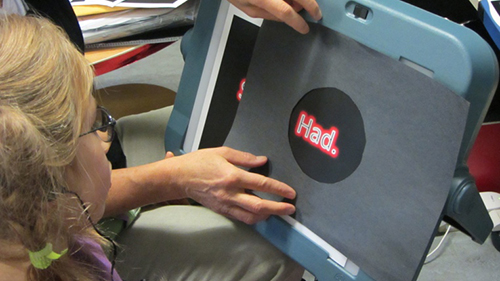As our Curriculum in Action outlines, our teachers and SLPs carefully assess each student’s language and literacy skills and design individualized instruction that includes accommodations to address challenges of ELA instruction and learning by students with SSPI. We introduce accommodations such as AAC tools and devices, adaptations of printed materials, environmental arrangements and workstation set-ups for instruction in key areas of reading, phonics, writing and vocabulary comprehension. CVI interventions are used to support all areas of our ELA curriculum.
Adam’s goals for ELA are to increase his independence by taking more turns and making clear choices. The accommodations for this activity focus on making a set of objects more visibly accessible by using light paired with the color red, his preferred color. The objects being used represent symbols for song choices.
In the following set of pictures, Adam is being presented with items used to represent song choices that accompany his ELA unit.


In the following pictures, the classroom lights have been dimmed and items are placed on a light box.
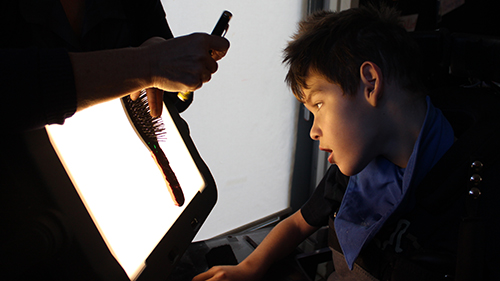
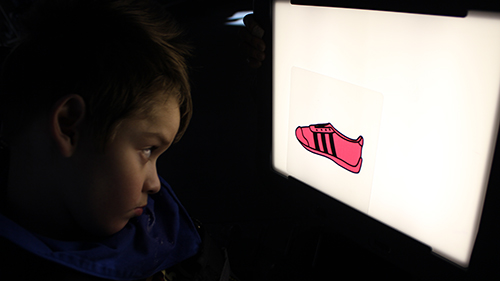
For students attending to 2-demensional representations, teaching visually salient features is a CVI intervention taken directly from a Christine Roman-Lantzy CVI workshop. The intervention is used during direct instruction and its goal is to teach students with CVI the salient features, or special characteristics that make an item visually distinct. The goal in teaching salient features is that students will build the metacognitive processes for looking and problem solving the visual world when they can use visually descriptive language to support and identify what they see.
(The students using these materials and receiving this instruction still needed accommodations like backlighting, less complex images to look at, and some of them worked best in a quiet, low-lit room. But, their level of CVI was such that they could begin to fixate on a specific target and then learn how to study the visual details of that target.)
The following are 2 example lessons teaching salient features.
1. Realistic pictures or illustrations depicting main concepts and themes are adapted to remove background, so that only 2-3 distinct visual features remain. The exact language used to describe the salient features is written in the corner of each image. This supports student comprehension and recognition of the image when it is presented in different lessons, or when presented by different teachers. Using consistent language to label a referent when learning something new, supports student comprehension and recognition.
2. The images are presented with back lit lighting like a light box or on a PowerPoint document presented on a computer.
3. The language used during instruction teaches students the salient features they should focus on within the image.
4. Once students are familiar with the images and the language used to describe the image, several similar images with the same salient features are presented in the same manner as the original.
5. After students are familiar with these additional images, they are now presented with images with different salient features. This is called teaching comparative thought. Comparative thought activities help students build an internal understanding of what things look like and then apply that understanding when new things are encountered. As students become more familiar with this visually descriptive language and with the habits or processes of looking and studying things in their environment, we are hoping to build or entice their visual curiosity to help them build cognitive processes for looking at and problem solving the visual world.
Teaching language for comparative thought:
Cat
Rabbit
1. Realistic pictures or illustrations depicting main concepts and themes are adapted to remove background, so that only 2-3 distinct visual features remain. The exact language used to describe the salient features is written in the corner of each image. This supports student comprehension and recognition of the image when it is presented in different lessons, or when presented by different teachers. Using consistent language to label a referent when learning something new, supports student comprehension and recognition.
2. The images are presented with back lit lighting like a light box or on a PowerPoint document presented on a computer.
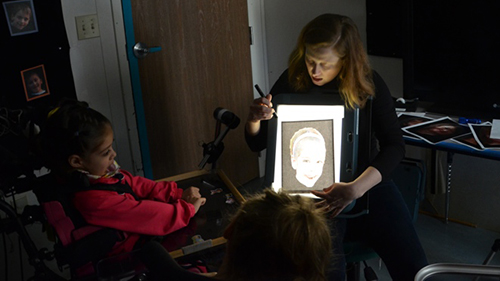
3. The language used during instruction teaches students the salient features they should focus on within the image. This is an example of one student’s AAC device with some of the descriptive vocabulary used during this unit.
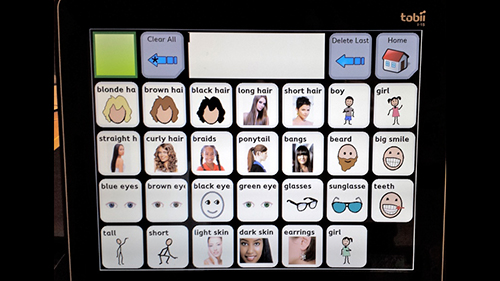
4. Once students are familiar with the images and the language used to describe the image, several similar images with the same salient features are presented in the same manner as the original.
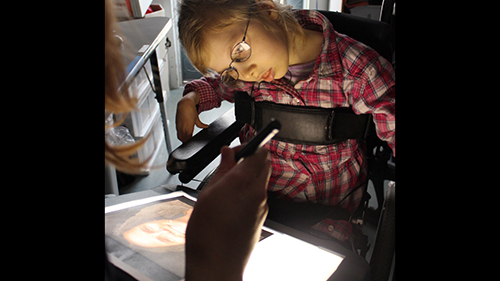
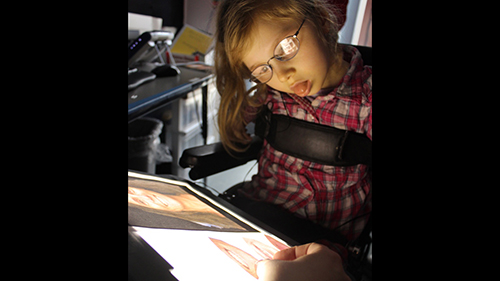

5. After students are familiar with these additional images, they are now presented with images with different salient features. This is called teaching comparative thought. Comparative thought activities help students build an internal understanding of what things look like and then apply that understanding when new things are encountered. As students become more familiar with this visually descriptive language and with the habits or processes of looking and studying things in their environment, we are hoping to build or entice their visual curiosity to help them build cognitive processes for looking at and problem solving the visual world.
Teaching language for comparative thought:
Top photo
Bottom photo
Bridge School students with CVI who are able to recognize very familiar 2-dimensional pictorial representations but typically rely on information begin spoken before relying on their vision, are taught the salient features of whole words and letters to access written text. The CVI intervention to teach salient features of letters is the same used by Christine Roman-Lantzy to teach high frequency sight words.
Interventions for these students include:
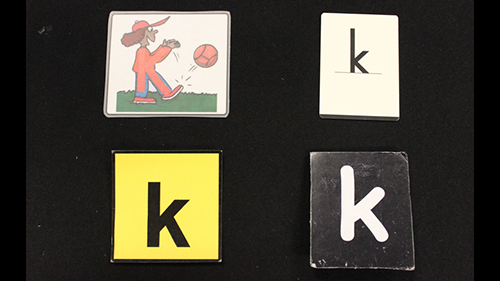

We start letter instruction by teaching salient features while the student makes the letter shape. The following are two example lessons on Learning about Letters.
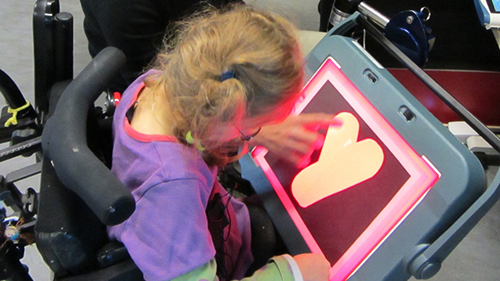
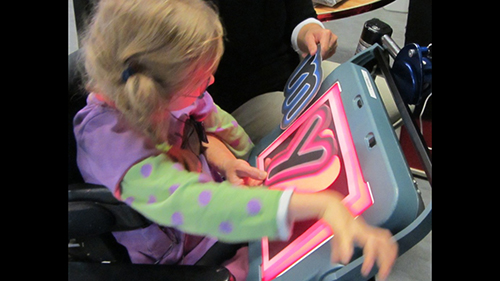
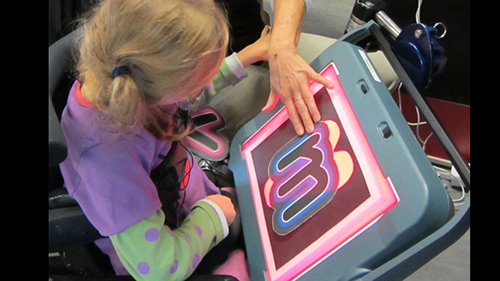
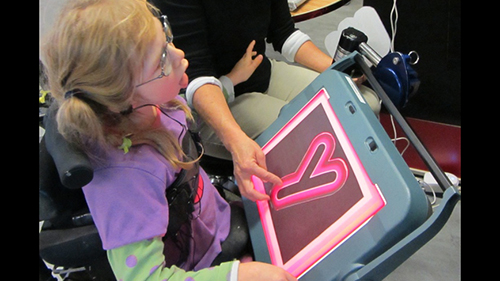

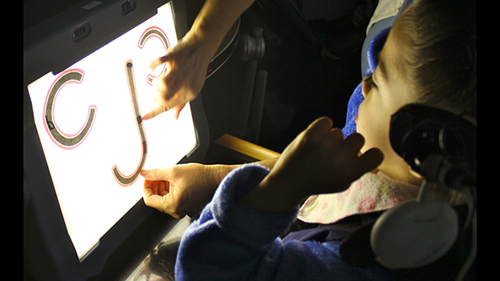
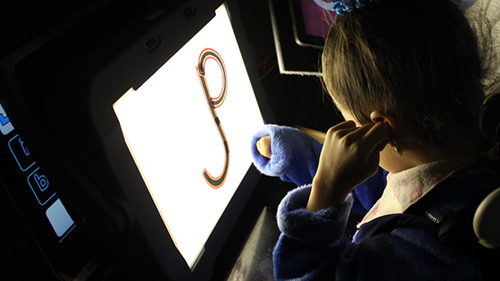
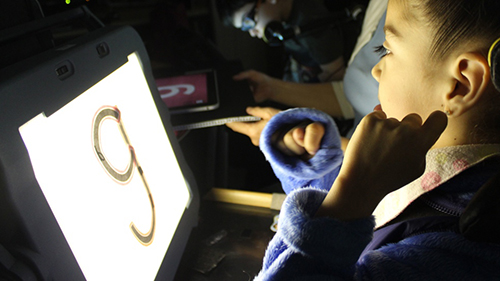
For Bridge School students with CVI who use AAC, positive intervention outcomes of teaching salient features of letters indicate students are:
The following photos illustrate examples of two students with two different CVI profiles and how those profiles impact the design of their AAC alphabet boards.
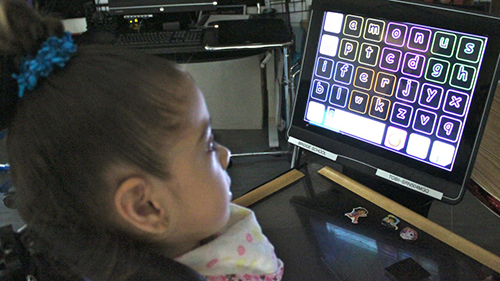
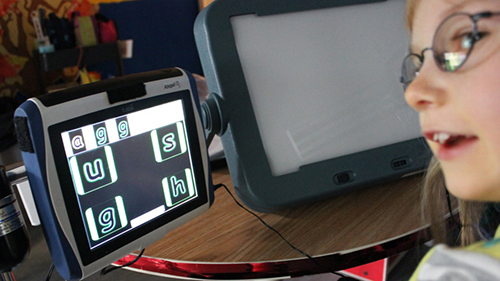
The CVI intervention to support students with CVI learning sight words follows similar steps used for learning individual letters.

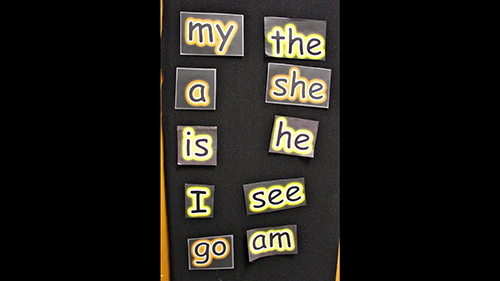
The next step in teaching students with CVI to identify text is to have them read connected text after identifying sight words in isolation. Having students with CVI access text in its most visually conventional form is the long-term goal for intervention, and students must be monitored and interventions adapted as their CVI profiles change.

